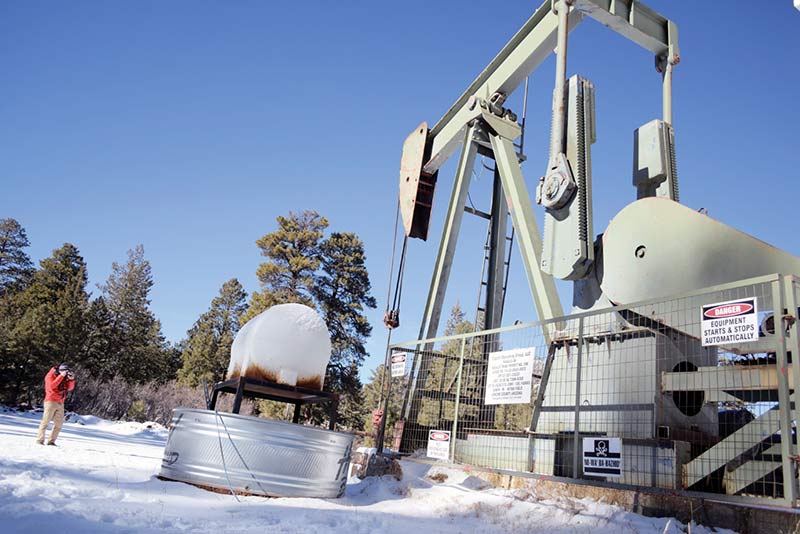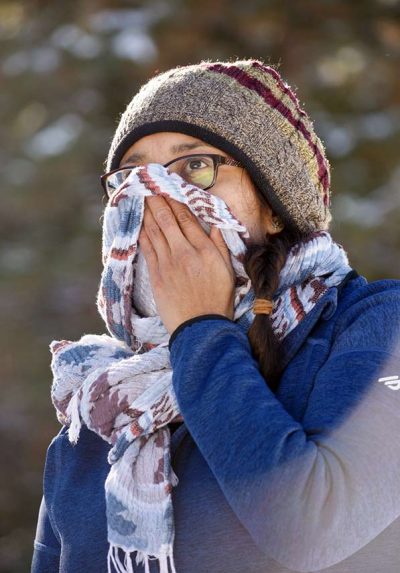
Tour finds toxic gas leaks in Red Valley

Navajo Times | Ravonelle Yazzie Pete Dronkers, with Earthworks, checks for invisible toxic gas emissions with an infrared camera at one of several oil wells that sit on the Chuska Mountains Jan. 11.

Navajo Times | Ravonelle Yazzie
Pete Dronkers, with Earthworks, checks for invisible toxic gas emissions with an infrared camera at one of several oil wells that sit on the Chuska Mountains Jan. 11.
RED VALLEY N.M.
The big concern is water, said Robyn Jackson during an oil drill site visit she organized on Jan. 11. In the Red Valley area and throughout Buffalo Pass, there is oil and gas being extracted.
It’s not a secret that energy development has environmental and health impacts – something Red Valley knows firsthand.

Navajo Times | Ravonelle Yazzie
Robyn Jackson with Diné CARE protects her mouth and nose from the foul smell coming off one of the oil wells on Jan. 11.
The surrounding area has been in the thrust of energy development for decades now.
In the past the community has had to deal with uranium, helium, gravel and timber development.
This energy development has left dozens of abandoned uranium mines in the area and other resource extraction continues to this day.
Leaving local advocates like Jackson, who is with Diné C.A.R.E., wondering, “How do we best take care of our water and in that way take care of ourselves?”
One drill site near Red Valley was determined by Pete Dronkers, from Earthworks, to be leaking toxic fumes into the air.
“There is just a ground line emitting sulfurous smelling gas but it’s pretty obvious in the camera,” he said.
Dronkers used an optical gas-imaging camera that can see gasses that can’t be seen with the human eye like methane, ethylbenzene and xylene.
“It’s coming from ground level and they’re not trying to capture that and combust it all,” Dronkers was explaining to the group. “That site was problematic and we wanted to get out as soon as possible. But that is very bad practice.”
The drill site had an open metal pipe on the ground emitting these toxic fumes into the air. This is something that Dronkers hasn’t seen in his four years of documenting oil and gas drill sites.
“Specially to vent just at ground level,” he said. “Typically, they try to destruct those gasses through a combustion and proper exhaust. But in the case up there is no attempt to do that at all.”
This can have environmental and health impacts on the community, drill site workers and local wildlife.
To read the full article, pick up your copy of the Navajo Times at your nearest newsstand Thursday mornings!
Are you a digital subscriber? Read the most recent three weeks of stories by logging in to your online account.








 Highway 264,
Highway 264, I-40, WB @ Winslow
I-40, WB @ Winslow